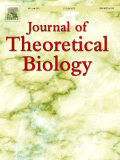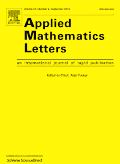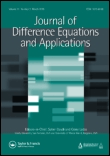
JOURNAL OF MATHEMATICAL BIOLOGY
Scope & Guideline
Innovating Insights Through Mathematical Modeling.
Introduction
Aims and Scopes
- Mathematical Modeling of Biological Systems:
The journal publishes research that utilizes mathematical models to describe various biological processes, including ecological interactions, population dynamics, and disease spread. - Interdisciplinary Approach:
It fosters interdisciplinary research that bridges mathematics, biology, and computational sciences, encouraging collaboration between mathematicians and biologists. - Application of Stochastic Processes:
The use of stochastic models to understand the dynamics of biological systems, such as population genetics and epidemiology, is a significant focus area. - Dynamical Systems and Bifurcation Theory:
Research involving dynamical systems, stability analysis, and bifurcation theory to study complex behaviors in biological systems is prominently featured. - Quantitative Analysis and Data Fitting:
The journal emphasizes quantitative analysis of biological data, including parameter estimation and model fitting, to validate mathematical models against real-world observations. - Multiscale Modeling:
There is a growing interest in multiscale modeling approaches that integrate different biological scales, from molecular to ecosystem levels.
Trending and Emerging
- Multiscale and Hierarchical Modeling:
There is a rising trend in developing models that integrate multiple biological scales, from molecular interactions to population dynamics, addressing the complexity of biological systems. - Stochastic and Probabilistic Models:
The application of stochastic modeling approaches to biological processes, particularly in epidemiology and genetics, is gaining prominence, reflecting the inherent uncertainties in biological systems. - Network-Based Approaches:
Research employing network theory to model biological interactions, such as disease transmission and ecological relationships, is increasingly common, indicating a shift towards understanding systems as interconnected networks. - Adaptive and Evolutionary Dynamics:
There is a growing interest in models that incorporate adaptive behaviors and evolutionary dynamics, particularly in the context of changing environments and selective pressures. - Data-Driven Modeling and Machine Learning:
The integration of machine learning techniques and data-driven approaches into mathematical modeling is emerging as a significant trend, enabling more accurate predictions and analyses of complex biological systems.
Declining or Waning
- Classical Population Models:
Traditional population models, such as basic Lotka-Volterra systems, appear to be less frequently cited in favor of more complex models that incorporate factors like stochasticity and spatial heterogeneity. - Static Models without Dynamics:
Research focusing solely on static models, which do not account for temporal changes or dynamics in biological systems, has diminished as the field increasingly values dynamic and adaptive models. - Deterministic Approaches:
There has been a noticeable shift away from purely deterministic models towards those incorporating randomness and uncertainty, reflecting a broader recognition of biological complexity. - Single-Species Focus:
Research centered on single-species models is declining, as there is a growing emphasis on multispecies interactions and community dynamics. - Simplistic Epidemiological Models:
Basic epidemiological models without consideration of real-world complexities, such as social behavior and network structures, have become less prevalent as researchers seek more realistic frameworks.
Similar Journals

BULLETIN OF MATHEMATICAL BIOLOGY
Innovating Research at the Crossroads of Biology and MathematicsBulletin of Mathematical Biology, published by Springer, is a premier journal dedicated to advancing the field of mathematical biology. With an ISSN of 0092-8240 and an E-ISSN of 1522-9602, this journal has been at the forefront of interdisciplinary research since its inception in 1973, continuing to deliver high-quality contributions through 2024. Operating without an open-access model, the journal maintains robust academic rigor, reflected in its category quartiles for 2023, which positions it in Q1 and Q2 across several relevant fields, including Agricultural and Biological Sciences, Biochemistry, Genetics, and Mathematics, among others. Its impressive Scopus ranks further underscore its significance, placing it in the top tier of journals in general mathematics and agricultural sciences. Researchers, professionals, and students looking to deepen their understanding and contribute to the evolving landscape of mathematical biology will find this journal an essential resource for contemporary studies and advancements in the field.

JOURNAL OF THEORETICAL BIOLOGY
Transforming Theoretical Concepts into Practical SolutionsJOURNAL OF THEORETICAL BIOLOGY, published by Academic Press Ltd - Elsevier Science Ltd, stands as a pivotal source of scholarly research in the domains of theoretical and applied biological sciences. Since its inception in 1961, this esteemed journal has contributed significantly to the advancement of knowledge across various fields, including agricultural sciences, applied mathematics, biochemistry, genetics, immunology, and medical research. With a commendable Q2 ranking in multiple categories for 2023, it showcases robust impact throughout the academic community, reflected in its high Scopus rankings, which place it in the top 25% of journals in several categories. The journal's commitment to fostering interdisciplinary research supports its objective of bridging theoretical frameworks with practical applications, making it an essential resource for researchers, professionals, and students alike. With its wide-ranging topics and a keen focus on innovation, the JOURNAL OF THEORETICAL BIOLOGY is indispensable for those seeking to explore the complexities of biological systems and their mathematical modeling.

Quantitative Biology
Exploring the Intersection of Numbers and NatureQuantitative Biology is a prestigious journal published by WILEY, focusing on the interdisciplinary study of quantitative approaches in the biological sciences. With an ISSN of 2095-4689 and an E-ISSN of 2095-4697, this journal has established itself as a critical platform for researchers exploring complex biological systems through mathematical and computational methodologies. Operating out of China, Quantitative Biology significantly contributes to its field, holding a Q2 ranking in various categories, including Applied Mathematics and Biochemistry, Genetics and Molecular Biology, according to the latest Scopus rankings. These rankings reflect the journal's commitment to publishing high-quality research that employs advanced modeling and simulation techniques. The journal's impact is evident with its position in the 84th percentile for Applied Mathematics, indicating its relevance and growth in a competitive academic landscape. Although it does not currently operate under an Open Access model, the journal is pivotal for professionals and students alike, aiming to bridge the gap between mathematical theories and biological applications. Researchers are encouraged to submit their innovative findings and engage with the vibrant community dedicated to advancing the quantitative understanding of biological phenomena.

JAPAN JOURNAL OF INDUSTRIAL AND APPLIED MATHEMATICS
Exploring New Horizons in Engineering SolutionsThe Japan Journal of Industrial and Applied Mathematics, published by Springer Japan KK, is a pivotal platform for disseminating cutting-edge research in the fields of applied mathematics and engineering. With an ISSN of 0916-7005 and an E-ISSN of 1868-937X, this journal has been a cornerstone in the academic community since its inception in 1991 and will continue to contribute pivotal insights through 2024. Positioned in the Q3 category for both Applied Mathematics and Miscellaneous Engineering according to 2023 rankings, it is recognized for its diverse range of topics and interdisciplinary approaches. Despite its competitive ranking, the journal fosters valuable contributions that challenge conventional methodologies and inspire innovation. Researchers, professionals, and students alike will find the journal’s contents invaluable for advancing knowledge and exploring new methodologies in industrial and applied mathematics.

Journal of Dynamics and Differential Equations
Pioneering Research in Dynamics and Differential EquationsJournal of Dynamics and Differential Equations, published by SPRINGER, is a premier academic journal dedicated to advancing the understanding of dynamic systems and their mathematical foundations. Operating since its inception in 1989, the journal has become a vital resource for researchers and practitioners in the field, boasting a commendable Q1 ranking in the Analysis category as of 2023 and ranking #39 out of 193 journals in Mathematics Analysis on Scopus, placing it in the 80th percentile. While it maintains a traditional subscription model, its substantial contributions to the mathematics community—measured by a robust impact and adherence to high academic standards—make it essential reading for those engaged in differential equations and dynamical systems. The journal covers a broad scope of theoretical and applied research, positioning itself as a cornerstone for innovative studies and discussions, and ensuring its relevance to both contemporary and future mathematical inquiries.

ACTA APPLICANDAE MATHEMATICAE
Fostering Dialogue Between Theory and ApplicationACTA APPLICANDAE MATHEMATICAE is a prestigious journal in the field of Applied Mathematics, published by Springer in the Netherlands. Since its inception in 1983, it has consistently contributed to the advancement of mathematical theory and its applications across various domains, fostering a dialogue between theoretical foundations and practical implementations. The journal holds a commendable position in the academic community, being ranked in the Q2 category and achieving a Scopus rank of 246 out of 635 in Applied Mathematics, which places it in the 61st percentile, reflecting its significant impact and relevance. ACTA APPLICANDAE MATHEMATICAE seeks to disseminate high-quality research articles, review papers, and case studies that address contemporary challenges in applied mathematics, thus inviting submissions that enhance the understanding of both foundational concepts and innovative applications. While it retains a traditional subscription-based access model, the journal emphasizes the importance of broadening the reach of mathematical research. It serves as an invaluable resource for researchers, professionals, and students eager to engage with current advancements and contribute to this dynamic field.

Applied Mathematics Letters
Exploring Innovations at the Intersection of Math and Real-World ApplicationsApplied Mathematics Letters is a prestigious journal dedicated to the dissemination of significant research in the field of applied mathematics. Published by PERGAMON-ELSEVIER SCIENCE LTD in the United Kingdom, this journal serves as a vital resource for researchers, professionals, and students alike, aiming to bridge theoretical findings and practical applications. With an impressive impact factor placing it in the Q1 category and ranked 33 out of 635 in the Applied Mathematics category by Scopus, it showcases influential articles that contribute to advancements across various applications of mathematics. The journal's coverage from 1988 to 2025 ensures a rich archive of research that remains relevant and insightful for contemporary studies. Currently, it operates under a subscription-based model, providing access to cutting-edge research that forms the backbone of mathematical application in science and engineering. To become part of this dynamic community of scholars, readers are encouraged to explore the latest findings and ongoing discussions that highlight the interplay between mathematics and its real-world impacts.

Journal of the Royal Society Interface
Advancing Knowledge Across BoundariesJournal of the Royal Society Interface is a premier interdisciplinary journal dedicated to the convergence of life sciences, physical sciences, and engineering. Published by the esteemed Royal Society in the United Kingdom, this journal serves as a dynamic platform for innovative research that pushes the boundaries of both fundamental and applied science. With a significant impact factor and ranked in the prestigious Q1 category across multiple domains, including Biochemistry, Bioengineering, and Biomedical Engineering, the journal consistently prioritizes high-quality contributions that innovate and inspire. Accessible to researchers, professionals, and students alike, it aims to cultivate a deeper understanding of complex interactions and synergies among biological and physical systems. From its inception in 2004 to its evolving knowledge contributions through 2024, the Journal of the Royal Society Interface plays a pivotal role in shaping future research directions and fostering collaboration across scientific domains.

Discrete and Continuous Dynamical Systems-Series S
Advancing the Frontiers of Dynamical SystemsDiscrete and Continuous Dynamical Systems-Series S, published by the American Institute of Mathematical Sciences (AIMS), is a premier journal dedicated to advancing the fields of Analysis, Applied Mathematics, and Discrete Mathematics and Combinatorics. With an impressively ranked reputation—categorizations resting in the Q2 quartile for 2023 across multiple mathematical domains—it serves as a crucial platform for disseminating impactful research findings and innovative methodologies in dynamical systems, inequality analysis, and combinatorial structures. The journal's commitment to high-quality scholarship is underscored by its exceptional Scopus rankings, placing it in the top echelons of mathematics journals. Established in 2008, it has steadily converged towards becoming a valuable resource for researchers, professionals, and students alike, providing them with significant insights and developments crucial for furthering their academic pursuits. Although it is not open access, it maintains a wide readership due to its comprehensive scope and relevance in contemporary mathematical discourse.

JOURNAL OF DIFFERENCE EQUATIONS AND APPLICATIONS
Exploring innovative applications in algebra and analysis.The Journal of Difference Equations and Applications, published by Taylor & Francis Ltd, is a vital resource for researchers and professionals in the fields of algebra, analysis, and applied mathematics. With its ISSN 1023-6198 and E-ISSN 1563-5120, this esteemed journal aims to foster the development and understanding of difference equations and their applications across various mathematical contexts. Since its inception in 1995, the journal has consistently ranked within the Q2 category for Algebra and Number Theory, Analysis, and Applied Mathematics, showcasing its high-impact contributions to the field. The journal is particularly noteworthy for its rigorous peer-review process and commitment to advancing mathematical knowledge and research. Although it is not open access, it remains accessible through various institutional subscriptions. With a focus on innovative methodologies and interdisciplinary approaches, the Journal of Difference Equations and Applications is essential reading for those looking to stay at the forefront of mathematical research and applications.